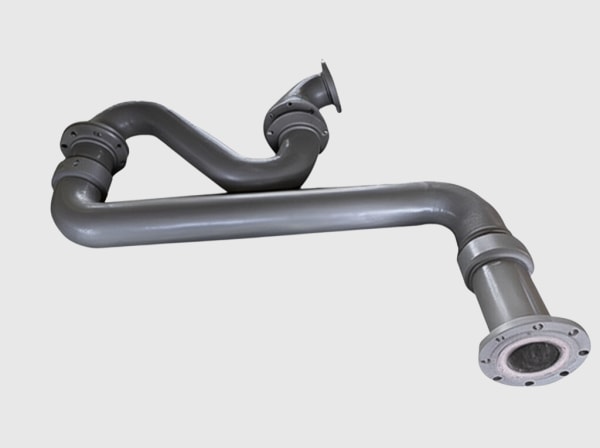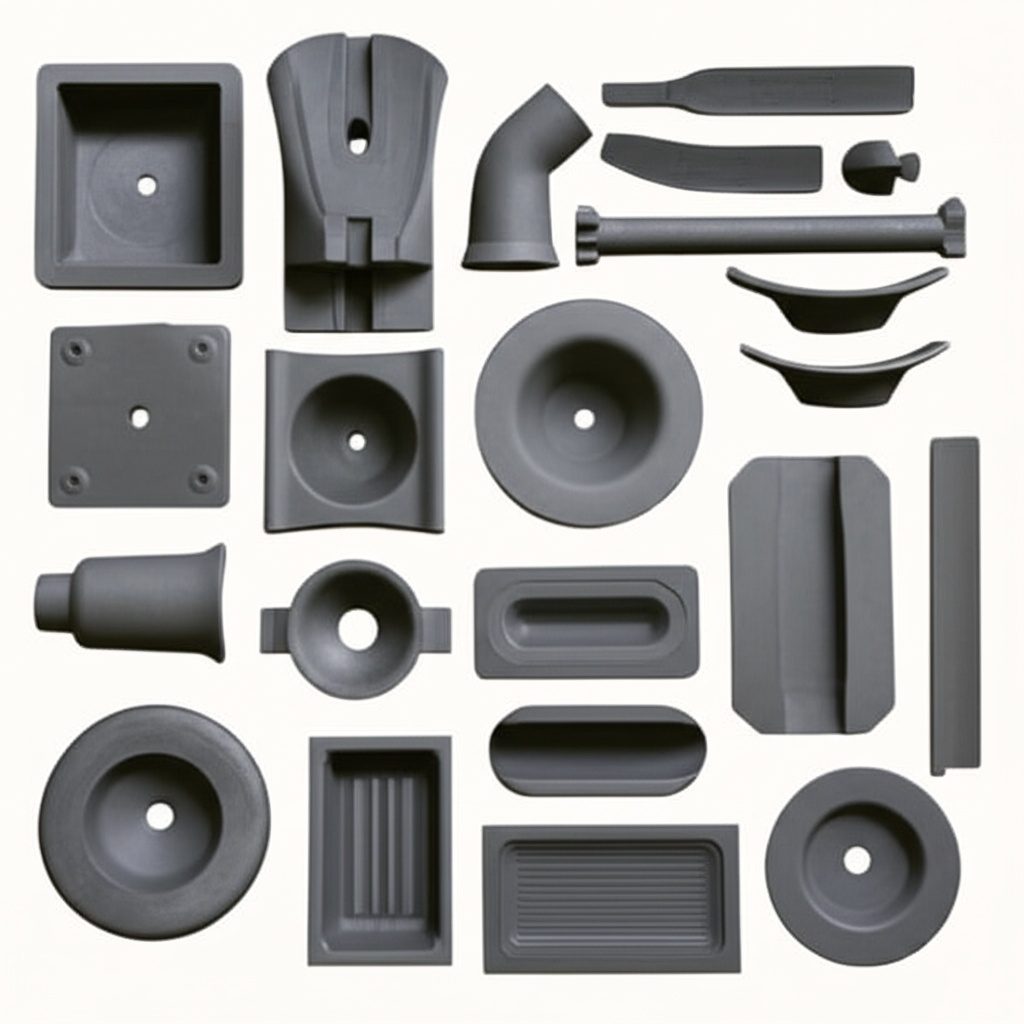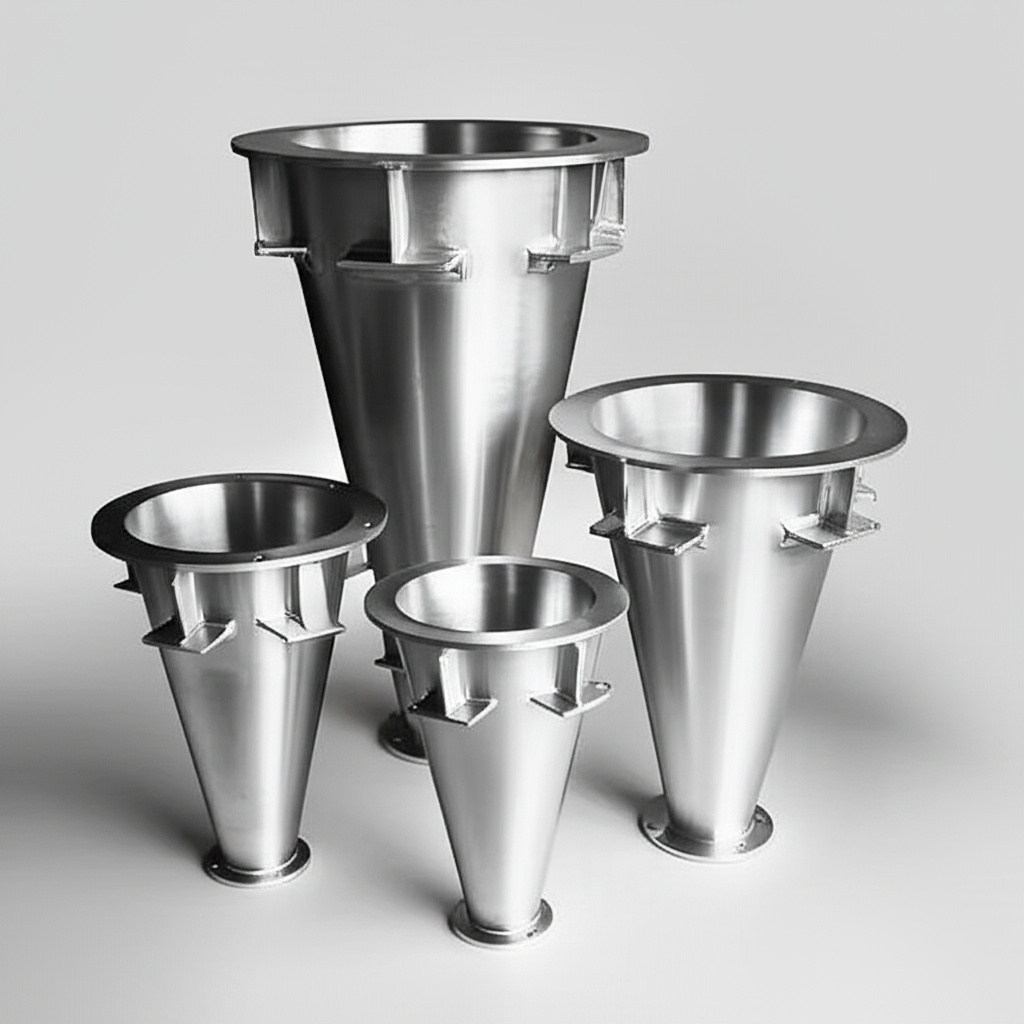Wysokoczęstotliwościowe, wysokiej gęstości systemy zasilania DC SiC dla telekomunikacji, przetwarzania brzegowego i przemysłowych sieci DC

Udział
Przegląd produktów i znaczenie dla rynku w 2025 r.
Wysokiej częstotliwości, wysokiej gęstości systemy zasilania prądem stałym z węglika krzemu (SiC) integrują tranzystory MOSFET i diody SiC z zaawansowaną magnetyką, sterowaniem cyfrowym i solidnym opakowaniem termicznym, aby zapewnić kompaktową, wydajną konwersję DC dla lokalizacji telekomunikacyjnych, węzłów przetwarzania brzegowego i przemysłowych sieci DC. Działając niezawodnie w podwyższonych temperaturach otoczenia i w warunkach zakłóceń sieciowych powszechnych w Pakistanie, systemy te zapewniają precyzyjnie regulowane napięcie 48–54 Vdc (telekomunikacja), 380–400 Vdc (dystrybucja HVDC) i niestandardowe szyny DC dla napędów i urządzeń procesowych.
Dlaczego rok 2025 jest kluczowy w Pakistanie:
- Zagęszczenie sieci: Rozbudowa 4G/5G i przetwarzanie brzegowe wymagają kompaktowych prostowników i półek zasilania prądem stałym o wysokiej niezawodności i niskich kosztach eksploatacji.
- Modernizacja przemysłu: Przemysł tekstylny, cementowy i stalowego zakłady coraz częściej przyjmują mikrosieci DC w celu uzyskania wyższej wydajności i prostszej integracji magazynowania energii.
- Wyzwania związane z jakością zasilania: Częste spadki, wzrosty i harmoniczne wymagają wejść, które utrzymują niski THD, wysoki współczynnik mocy i stabilne szyny DC.
- Zrównoważony rozwój i presja kosztowa: Niższe straty SiC zmniejszają zapotrzebowanie na energię chłodzenia i rozmiar szafy, wspierając cele ESG i lepszy TCO.
Sicarb Tech dostarcza kompleksowe platformy zasilania prądem stałym SiC od prostowników 3 kW po moduły szafowe 30–100 kW i systemy szafowe 250 kW+, wyposażone w wejścia totem-pole/Vienna, wysokiej częstotliwości stopnie DC/DC i inteligentne sterowanie zapewniające odporność i zdalne zarządzanie.

Specyfikacje techniczne i zaawansowane funkcje
Konfigurowalny według zastosowania (telekomunikacja, brzeg, przemysłowa sieć DC):
- Parametry elektryczne
- Wejście AC: 220/230 Vac jednofazowe lub 380/400/415 Vac trójfazowe, 50 Hz
- Wyjścia DC:
- Telekomunikacja: 48/54 Vdc (regulacja ±1%), 60–300 A na blok; równolegle do >3 kA
- Edge/IT DC: dystrybucja HVDC 380–400 Vdc, 5–50 kW na półkę
- Przemysłowe sieci DC: konfigurowalne 350–800 Vdc, 30–250 kW na szafę, możliwość łączenia równoległego do MW
- Wejście PFC: PF ≥0,99; wejściowy THD ≤3% z kompensacją harmonicznych
- Wydajność i częstotliwość
- Sprawność stopnia: 97,0–98,5% przy obciążeniu znamionowym; >96% przy obciążeniu 20–30%
- Przełączanie: 45–120 kHz PFC; 60–150 kHz DC/DC (LLC, przesunięty FB)
- Sterowanie i ochrona
- Sterowanie cyfrowe (MCU/FPGA), sterowanie średnim prądem, adaptacyjny czas martwy, seria/pomijanie dla wydajności przy małym obciążeniu
- Zabezpieczenia: OCP, OVP/UVP, OTP, wyjście ORing, aktywne sterowanie prądem rozruchowym, odporność na przepięcia (seria IEC 61000-4)
- Jazda przelotowa, odzyskiwanie po zaniku napięcia i sekwencjonowanie łagodnego rozruchu dla połączenia akumulatora/ESS
- Termiczne i mechaniczne
- Rozpraszacze ciepła SSiC/RBSiC, mocowanie z lutem srebrnym, DBC AlN/Si3N4
- Chłodzone powietrzem bloki 3–15 kW; chłodzone cieczą półki/szafy dla gęstości 30–250 kW
- Moduły wymienne podczas pracy z połączeniem ślepym zasilania/danych; opcje z klasą IP dla zapylonych lokalizacji
- Monitorowanie i integracja
- SNMP, Modbus-RTU/TCP, CAN; zdalna aktualizacja oprogramowania układowego; dostęp zabezpieczony przed cyberzagrożeniami
- Analityka: dryf ESR kondensatora, temperatura cewki indukcyjnej, stan wentylatora/pompy, wskaźniki zniekształceń wejściowych
- Interfejs akumulatora/ESS: 48 V lub HV DC, integracja BMS, przycinanie szczytów, rozruch awaryjny
- Zgodność
- IEC 62368/60950 (bezpieczeństwo ICT), IEC 62477-1 (konwertery mocy), IEC 61000-3-2/3-12 (harmoniczne), IEC 61000-6-2/6-4 (EMC)
- Praktyki zgodne z PEC i NTDC Grid Code w zakresie jakości zasilania
Opcje Sicarb Tech:
- Zestawy półek telekomunikacyjnych (19”/23”) z blokami 3 kW do 10 kW
- Półki DC 380 Vdc z połączeniem akumulatora LFP/LTO
- Przemysłowe szafy sieci DC z dwukierunkowym DC/DC do integracji PV/BESS
Czysta moc i kompaktowa powierzchnia dla sieci i zakładów w Pakistanie
| Jakość zasilania, gęstość i odporność dla telekomunikacji/brzegu/przemysłowego DC | System zasilania prądem stałym SiC o wysokiej częstotliwości (Sicarb Tech) | Tradycyjny krzemowy system zasilania prądem stałym |
|---|---|---|
| Sprawność stopnia (znamionowa) | 97,0–98,5% | 91–94% |
| Gęstość mocy | Możliwość uzyskania >10 kW/L | 4–6 kW/L |
| Jakość zasilania wejściowego | PF ≥0,99, THD ≤3% | PF 0,95–0,98, THD 5–10% |
| Odporność na środowisko | Niezawodny w temperaturze 40–45°C z planami obniżania parametrów | Znaczące obniżenie parametrów powyżej 35–40°C |
| Konserwacja | Przewidywalny, wymienny podczas pracy | Okresowe ręczne i dłuższe MTTR |
Kluczowe zalety i sprawdzone korzyści
- Oszczędność energii i chłodzenia: Niższe straty i mniejsze radiatory zmniejszają zapotrzebowanie na klimatyzację w schroniskach i kontenerach brzegowych.
- Efektywność przestrzeni: Wysoka gęstość zwalnia miejsce w szafie/szafie na radia lub obciążenie IT, obniżając CAPEX w lokalizacji.
- Jakość zasilania i czas sprawności: Bliski jedności PF i niski THD stabilizują zasilacze, zmniejszając niepożądane wyzwalania i nagrzewanie transformatorów.
- Niezawodność w trudnych warunkach: Ceramiczne ścieżki termiczne, powłoki konformalne i mechanika odporna na kurz pasują do zakładów cementowych, tekstylnych i stalowych.
Cytat eksperta:
„Prostowniki i konwertery DC/DC oparte na SiC osiągają wysoką wydajność przy podwyższonej częstotliwości, umożliwiając kompaktowe półki zasilania prądem stałym o doskonałej jakości zasilania — idealne do zastosowań telekomunikacyjnych i brzegowych.” — IEEE Power Electronics Magazine, High-Density DC Power for ICT, 2024
Zastosowania w świecie rzeczywistym i wymierne historie sukcesu
- Lokalizacje komórkowe metra w Karaczi (schrony telekomunikacyjne):
- Bloki prostownika SiC 3 kW w półkach 19”, wyjście 54 Vdc.
- Wyniki: Oszczędność energii w lokalizacji o ~8%; PF ≥0,99; THD zmniejszony z 7% do 2,5%; obciążenie wentylatora zmniejszone o 30% przy temperaturze otoczenia 45°C.
- Mikrocentrum danych Lahore:
- Półki SiC 30 kW 380 Vdc z chłodzeniem cieczą i połączeniem ESS.
- Wydajność: Sprawność szyny DC 98,1%; powierzchnia zmniejszona o 28%; autonomiczna jazda przelotowa podczas dwóch zdarzeń związanych z zapadami, zerowy czas przestoju IT.
- Pilot przemysłowej sieci DC w Fajsalabadzie:
- Przemysłowa szafa DC 250 kW zasilająca wiele VFD i obciążeń procesowych.
- Wynik: Energia procesowa zmniejszona o 5,6%; temperatura kabla/transformatora obniżona; interwał konserwacji wydłużony o jeden sezon ze względu na niższe naprężenia termiczne.
【Podpowiedź dotycząca obrazu: szczegółowy opis techniczny】 Infografika z trzema scenami: 1) Półka telekomunikacyjna 19” z wymiennymi podczas pracy blokami SiC 3–5 kW, szyny zbiorcze 54 Vdc; 2) Centrum danych brzegowych 380 Vdc w szafie z półkami chłodzonymi cieczą i ESS; 3) Przemysłowa szafa DC z połączeniem PV/BESS i dwukierunkowym DC/DC. Nakładki pokazują PF ≥0,99, THD ≤3%, sprawność 97–98,5%, przełączanie 45–120 kHz i mapy termiczne otoczenia 45°C. Fotorealistyczne, 4K.
Rozważania dotyczące wyboru i konserwacji
- Napięcie i topologia
- Wybierz półki zasilania telekomunikacyjnego 48/54 V dla lokalizacji RAN; 380–400 Vdc dla brzegowych/IT; 350–800 Vdc dla przemysłowych szyn DC.
- PFC typu totem-pole/Vienna dla wejść; LLC lub przesunięty FB dla izolacji i wysokiej wydajności.
- Strategia termiczna
- Chłodzenie powietrzem dla bloków 3–10 kW i umiarkowanej temperatury otoczenia; chłodzenie cieczą zalecane dla systemów 30–250 kW lub zamkniętych pomieszczeń.
- Sprawdź poprawność wyboru TIM i płaskość płyty podstawy; rozważ rozpraszacze SSiC/RBSiC w celu ograniczenia gorących punktów.
- EMC i interfejs sieciowy
- Dostrój filtry do lokalnej impedancji; sprawdź emisje/odporność zgodnie z normą IEC 61000 na miejscu.
- Koordynuj ochronę przeciwprzepięciową (MOV/TVS) z warstwami SPD obiektu.
- Niezawodność i serwis
- Włącz analitykę predykcyjną dla kondensatorów, cewek indukcyjnych i stanu wentylatora/pompy.
- Zapasowe części do wymiany podczas pracy; zaplanuj kwartalną kontrolę złączy i filtrów, miesięczną dla zapylonych zakładów.
- Integracja i sterowanie
- Zapewnienie łączności SCADA/DCIM (SNMP, Modbus, CAN); bezpieczne zdalne aktualizacje oprogramowania układowego.
- Konfiguracja krzywych obniżania mocy dla szczytów letnich i wysokości, jeśli ma to zastosowanie.
Czynniki sukcesu w branży i referencje klientów
- Czynniki sukcesu:
- Wstępne badanie harmoniczne i analiza obciążenia transformatora
- Współprojektowanie magnetyczne i termiczne dla pracy wysokiej częstotliwości
- Pilotaż w najgorętszych miesiącach w celu sfinalizowania krzywych obniżania mocy i wentylatorów
- Szkolenie pracowników w zakresie procedur wymiany podczas pracy i zdalnej diagnostyki
- Rekomendacja (Network Power Manager, główny operator telekomunikacyjny):
- „Półki SiC ustabilizowały nasz PF i THD w zasilaczu, jednocześnie obniżając zużycie energii w obudowie. Wymienne w trakcie pracy bloki i analityka skróciły nasz MTTR.”
Przyszłe innowacje i trendy rynkowe
- Perspektywy na lata 2025–2027:
- Ujednolicone zasilanie prądem stałym z BESS do redukcji szczytów, szybkiego ładowania i usług sieciowych w lokalizacjach brzegowych
- Współpakowane sterowniki i czujniki dla jeszcze wyższego CMTI i niższego EMI
- Ekonomia płytek SiC 200 mm obniżająca koszt na kW; lokalne partnerstwa montażowe w celu skrócenia czasu realizacji
- Sterowanie adaptacyjne oparte na sztucznej inteligencji reagujące w czasie rzeczywistym na zniekształcenia sieci i dryft termiczny
Perspektywa branżowa:
„Dystrybucja prądu stałego w połączeniu z konwersją w szerokim paśmie wzbronionym ma kluczowe znaczenie dla wydajnych architektur zasilania brzegowego i przemysłowego.” — IEA Technology Perspectives 2024, rozdział dotyczący elektroniki mocy
Najczęściej zadawane pytania i odpowiedzi ekspertów
- Czy możemy utrzymać PF ≥0,99 i THD ≤3% na zniekształconych zasilaczach?
- Tak. Nasze front-endy SiC wykorzystują kompensację harmonicznych i solidne sterowanie, aby spełnić cele w typowych profilach zniekształceń sieci pakistańskiej.
- Ile miejsca i energii możemy zaoszczędzić?
- Należy spodziewać się redukcji powierzchni o 20–35% i oszczędności energii o 5–10% na poziomie lokalizacji, w zależności od współczynnika obciążenia i chłodzenia.
- Czy systemy są wymienne podczas pracy i skalowalne?
- Tak. Bloki i półki są wymienne podczas pracy; szafy równolegle do skali MW z aktywnym współdzieleniem prądu.
- Czy chłodzenie cieczą jest obowiązkowe dla dużej gęstości?
- Nie zawsze. Bloki chłodzone powietrzem wystarczają do ~10 kW każdy; chłodzenie cieczą jest preferowane dla półek/szaf o mocy 30–250 kW lub w ciasnych obudowach termicznych.
- A co z integracją z akumulatorami i PV?
- Oferujemy dwukierunkowy DC/DC do sprzęgania BESS i wejść gotowych do PV, umożliwiając jazdę przelotową, redukcję szczytów i uruchamianie awaryjne.
Dlaczego to rozwiązanie działa w Twoich operacjach
Systemy zasilania prądem stałym SiC wysokiej częstotliwości firmy Sicarb Tech zapewniają czyste, wydajne i kompaktowe zasilanie prądem stałym, które sprawdza się w pakistańskich warunkach cieplnych i zmienności sieci. Dzięki bliskiemu jedności PF, niskiemu THD i wbudowanemu konserwacji predykcyjnej, zmniejszają OPEX, zmniejszają szafy i poprawiają czas sprawności — idealne dla wież telekomunikacyjnych, brzegowych centrów danych i przemysłowych sieci prądu stałego w środowiskach tekstylnych, cementowych i stalowych.
Połącz się ze specjalistami, aby uzyskać niestandardowe rozwiązania
Zmodernizuj swoje zasilanie prądem stałym dzięki Sicarb Tech:
- Ponad 10 lat doświadczenia w produkcji SiC, wspierane przez Chińską Akademię Nauk
- Niestandardowy rozwój w zakresie R-SiC, SSiC, RBSiC i SiSiC dla doskonałej mechaniki termicznej
- Transfer technologii i usługi zakładania fabryk w celu lokalizacji produkcji i testowania
- Dostawa pod klucz od materiałów po gotowe półki i szafy zasilania prądem stałym z dokumentacją zgodności
- Sprawdzony dorobek z ponad 19 przedsiębiorstwami; szybkie prototypowanie, testy terenowe i modelowanie ROI
Złóż wniosek o bezpłatny audyt zasilania prądem stałym i model ROI specyficzny dla danej lokalizacji dla sieci prądu stałego w telekomunikacji, brzegowych lub przemysłowych.
- Email: [email protected]
- Telefon/WhatsApp: +86 133 6536 0038
Zarezerwuj teraz miejsca inżynieryjne i produkcyjne na Q4 2025, aby zabezpieczyć dostawę przed szczytowymi sezonami wdrażania.
Metadane artykułu
- Ostatnia aktualizacja: 2025-09-11
- Następny zaplanowany przegląd: 2025-12-15
- Autor: Zespół inżynierii zastosowań Sicarb Tech
- Contact: [email protected] | +86 133 6536 0038
- Skupienie na standardach: IEC 62368, IEC 62477-1, IEC 61000-3-2/3-12, IEC 61000-6-2/6-4; zgodne z praktykami PEC i kryteriami jakości NTDC Grid Code

About the Author: Sicarb Tech
We provide clear and reliable insights into silicon carbide materials, component manufacturing, application technologies, and global market trends. Our content reflects industry expertise, practical experience, and a commitment to helping readers understand the evolving SiC landscape.




